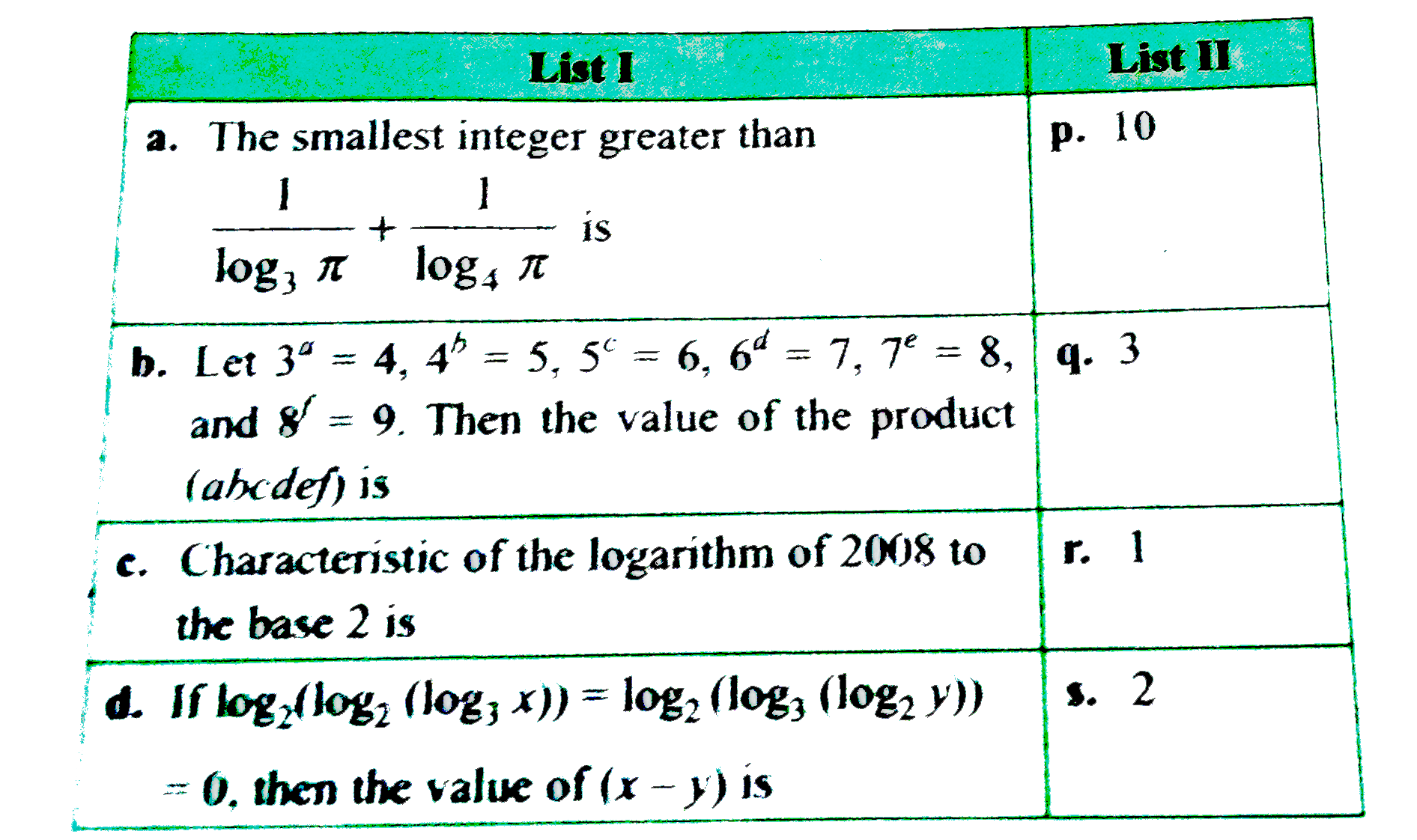The inequality √x(log)2√x≥2 is satisfied (a) by only one value of x (b) x∈(0,(14)) (c)x∈[4,∞) (d) x∈(1,2)Solution in Bengali
only one value of x
x∈(0,14]
x∈[4,∞)
x∈(1,2)
The correct Answer is:B, C
√xlog2√x≥2,x>0
⇒xlog2√x≥4
Taking log on both sides with base 2, we get
log2xlog2√x≥2
or(log2√x)(log2x)≥2
or(1/2)(log2x)(log2x)≥2
or(log2x)2≥4
or(log2x−2)(log2x+2)≥0
⇒log2x≤−2orlog2x≥2
⇒x≤1/4orx≥4
⇒x∈(0,1/4]∪[4,∞)
Topper's Solved these Questions
- BOOK - CENGAGE PUBLICATIONCHAPTER - LOGARITHM AND ITS PROPERTIESEXERCISE - Linked Comprehension Type6videos
LOGARITHM AND ITS PROPERTIES
- BOOK - CENGAGE PUBLICATIONCHAPTER - LOGARITHM AND ITS PROPERTIESEXERCISE - Matrix Match Type3videos
LOGARITHM AND ITS PROPERTIES
- BOOK - CENGAGE PUBLICATIONCHAPTER - LOGARITHM AND ITS PROPERTIESEXERCISE - Exercises (Single Correct Answer Type)50videos
LOGARITHM AND ITS PROPERTIES
- BOOK - CENGAGE PUBLICATIONCHAPTER - LOGARITHM AND ITS APPLICATIONS EXERCISE - Subjective Type9videos
LOGARITHM AND ITS APPLICATIONS
- BOOK - CENGAGE PUBLICATIONCHAPTER - MATHMETICAL REASONINGEXERCISE - Archives10videos
MATHMETICAL REASONING
Similar Questions
Consider the system of equations
log3(log2x)+log1/3(log1/2y)=1andxy2=9.
The value of 1/y lies in the interval02:30View SolutionMatch the following List I to List II
 02:55View Solution
02:55View Solution(log)418 is
03:01View SolutionFind the value of x satisfying the equations log3(log2x)+log1/3(log1/2y)=1 and xy2=9
04:52View SolutionStatements -1 : ~(p↔~q) is equivalent to p↔q
Statement-2: ~(p↔~q) is a tautology.01:30View SolutionLet f(x)=a^(x)-x ln a, a> 1. Then the complete set of real values of x for which f(x)>0 is (a)(1,oo)(b)(-1,oo)(c)(0,oo)(d)(0,1)
03:52View SolutionThe inequality √x(log)2√x≥2 is satisfied by (A) only one value of x (B) x∈(0,(14)] (C)x∈[4,∞) (d) x∈(1,2)
05:39View SolutionIf f(x)=x4tan(x3)−x1n(1+x2), then the value of d4(f(x))dx4 at x=0 is 0 (b) 6 (c) 12 (d) 24
04:11View SolutionNumber of integers satisfying the inequation (x2−x−1)(x2−x−7)<−5, are 4 (b) 2 (c) 1 (d) 0
03:53View SolutionIf y=log√tanx , then the value of dydx at x=π4 is given by (a)∞ (b) 1 (c) 0 (d) 12
05:55View SolutionFind the integral ∫15−8x−x2dx
A.12√21log∣∣ ∣∣√21+(x+4)√21−(x+4)∣∣ ∣∣+C
.B.12√21log∣∣ ∣∣√21−(x+4)√21+(x+4)∣∣ ∣∣+C
C. 1√21log∣∣ ∣∣(x+4)+√21(x+4)−√21∣∣ ∣∣+C
D.1√21log∣∣ ∣∣(x+4)−√21(x+4)+√21∣∣ ∣∣+C02:43View SolutionThe inequality √x(log)2√x≥2 is satisfied by (A) only one value of x (B) x∈(0,(14)] (C)x∈[4,∞) (d) x∈(1,2)
06:13View Solutionlimx→∞[√x+√x+√x−√x] is equal to (a)0 (b) 12 (c) log 2 (d) e4
07:00View SolutionIf S={x∈N:2+(log)2√x+1>1−(log)12√4−x2} , then (a)S={1} (b) S=Z (c) S=N (d) none of these
05:13View SolutionThe inequality √x(log)2√x≥2 is satisfied (a) by only one value of x (b) x∈(0,(14)) (c)x∈[4,∞) (d) x∈(1,2)
04:33View Solution∫x3logxdx is equal to A) x4logx4+C B) x48(logx−4x2)+C C) x416(4logx−1)+C D) x416(4logx+1)+C
07:23View Solution

